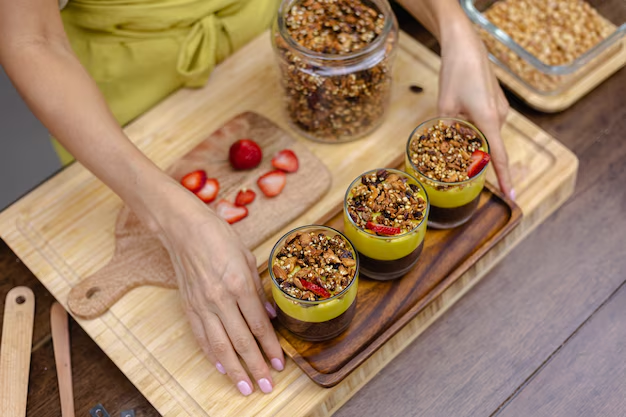How Long Are Cooked Beans Good in the Refrigerator? Your Ultimate Guide to Food Storage
Beans are a staple in many diets, celebrated for their versatility, nutritional value, and affordability. Whether they’re part of a wholesome soup or a simple side dish, knowing how long cooked beans remain safe and delicious in the refrigerator is crucial for both taste and food safety. Let's dive into the details, unveiling best practices and practical tips to ensure your beans are always delicious.
🕵️♀️ Understanding Bean Shelf Life
Cooked beans, like all cooked foods, have a limited shelf life when stored in the fridge. Generally, cooked beans last 3 to 5 days when stored correctly at or below 40°F (4°C). But how can you ensure they remain within this time frame while maintaining their quality?
Why Shelf Life Matters
The safety of your food is paramount. Allowing beans to linger too long in the fridge can lead to bacterial growth, which may cause foodborne illnesses. Moreover, as beans age, they lose flavor and texture, making your meal less enjoyable.
Factors Affecting Shelf Life
- Storage Temperature: Keeping your refrigerator at the proper temperature limits bacterial growth.
- Container Type: Airtight containers help retain moisture and prevent contamination.
- Initial Freshness: Beans that were fresh before cooking will typically have a longer shelf life.
- Humidity: High moisture can expedite spoilage.
🥡 Best Practices for Storing Cooked Beans
Whether you're storing black beans, lentils, or chickpeas, there’s a right way to keep them in the fridge. Follow these best practices to optimize shelf life and quality.
Proper Storage Steps
1. Cool Quickly:
- After cooking, let your beans cool at room temperature for about an hour. Avoid letting them sit out too long, as this can lead to spoilage.
2. Use Airtight Containers:
- Transfer cooled beans to airtight containers. These help maintain moisture and prevent odors from permeating into the beans.
3. Refrigerate Promptly:
- Store beans in the fridge immediately after transferring them to containers.
4. Label and Date:
- Always label your containers with the cooking date. This will help you keep track of their freshness and prevent any guessing games.
👃 Recognizing Signs of Spoilage
No one wants to eat spoiled food. Here’s how you can tell if your beans have gone bad:
Visual Clues
- Discoloration: Beans that have changed from their original color may have spoiled.
- Mold: Visible mold is a clear indicator of spoilage.
Smell Test
- Off Odors: If the beans emit a sour or unusual smell, they should not be consumed.
Texture Check
- Slime: A slimy texture is a definite sign that the beans are past their prime.
🍳 Reheating Tips
When it's time to dig in again, reheating your beans properly ensures safety and flavor retention.
Methods for Reheating
1. Stovetop Reheating:
- Heat the beans over low to medium heat, stirring occasionally until warmed through. This method helps maintain texture.
2. Microwave:
- Use a microwave-safe dish, cover loosely, and heat in short bursts, stirring in between.
3. Oven:
- If reheating a larger batch, the oven can provide even warmth. Preheat to around 350°F (175°C) and heat until warm.
Precautionary Measures
- Ensure beans reach an internal temperature of at least 165°F (74°C) to kill any potential bacteria.
- Add a splash of water or broth to prevent them from drying out during reheating.
🌱 Creative Ways to Use Leftover Beans
Leftover beans aren’t just about reheating and serving. They can become an exciting new dish!
Quick and Yummy Ideas
- Bean Salad: Toss beans with fresh vegetables, olive oil, and vinegar for a refreshing meal.
- Bean Dip: Blend beans with garlic, lemon juice, and tahini for a homemade dip.
- Hearty Soup: Use beans as a base and add broth, vegetables, and spices for a comforting soup.
🔍 FAQs on Bean Storage
Can I Freeze Cooked Beans for Longer Storage?
Yes! Cooked beans freeze well for up to six months. Ensure they're stored in airtight freezer bags or containers to prevent freezer burn.
What's the Best Way to Defrost Beans?
Transfer them to the fridge to thaw overnight or use the defrost setting on your microwave if you're in a hurry.
Are Canned Beans More Shelf-Stable?
Canned beans are shelf-stable until opened. After opening, they should be stored in an airtight container and refrigerated, similar to home-cooked beans.
🍲 Summary: Your Go-To Bean Guide
- Refrigerator Shelf Life: 3-5 days
- Key Storage Tips:
- Cool quickly
- Use airtight containers
- Refrigerate promptly
- Label with date
- Reheating Method:
- Ensure 165°F internal temperature
- Add moisture when reheating
- Signs of Spoilage: Discoloration, mold, sour smell, slimy texture
- Freezing: Up to 6 months for extended storage
📝 Quick Takeaways
- 🕒 Timely Storage: Place beans in the fridge within two hours of cooking.
- 👀 Check Regularly: Always inspect stored beans before consuming.
- ✨ Be Creative: Use leftovers as an ingredient in exciting new recipes.
With proper storage and handling, your beans will not only last longer but will safely satisfy your taste buds for days to come. Remember these guidelines each time you cook, store, and enjoy your beans, ensuring both their freshness and your peace of mind. Happy cooking!
